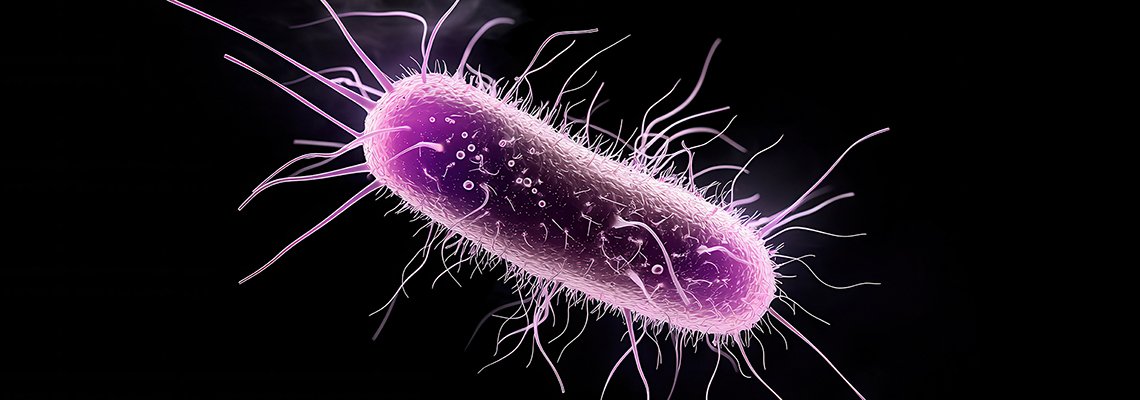Understanding endotoxins: Their impact on production and the role of chromatography in removal
Published date: 19 February 2025

In industries such as pharmaceuticals, biotechnology, and medical device manufacturing, ensuring product safety and quality is essential. Among the many potential contaminants in production processes, endotoxins stand out due to their harmful effects on both product quality and human health. Understanding what endotoxins are, their impact on products, and the importance of their removal during production is critical for anyone involved in manufacturing.
What are endotoxins?
Endotoxins are toxic molecules found in the outer membrane of gram-negative bacteria. These bacteria, which include species such as Escherichia coli and Pseudomonas aeruginosa, contain endotoxins as part of their structure. The main component of endotoxins is lipopolysaccharide (LPS), a complex molecule consisting of lipid and polysaccharide components.
Unlike exotoxins, which are secreted by living bacteria, endotoxins are released only when the bacteria die or are destroyed. This characteristic makes them particularly dangerous, as they can persist in the environment even after the bacteria have been eliminated. As a result, endotoxins can easily contaminate products during manufacturing processes and remain undetected without proper testing.
How endotoxins affect products
Endotoxins pose a risk in industries where products are intended for direct or indirect human use. When introduced into the body, endotoxins can trigger strong immune responses. In severe cases, even small amounts of endotoxins can lead to fever, inflammation, and more serious conditions such as septic shock or organ failure. For example, in the pharmaceutical and medical device industries, endotoxins in injectable drugs, vaccines, or medical devices can cause severe reactions in patients. This makes controlling endotoxin contamination a non-negotiable aspect of product safety.
Additionally, endotoxins can also affect the quality and integrity of other products, such as biopharmaceuticals or laboratory-grade reagents. Their presence can result in compromised formulations, reduced product effectiveness, and, in some cases, render products unfit for use.
Why endotoxins are critical to eliminate during production
The primary goal of eliminating endotoxins is to protect patient and consumer health. Even trace amounts can lead to significant adverse effects. Strict regulatory guidelines govern permissible endotoxin levels such as pharmaceutical products, precision-fermented proteins, and animal health products. Regulatory bodies such as the FDA and EMA mandate rigorous testing protocols to ensure safety.
In many industries, failure to control endotoxin levels can result in significant financial and regulatory consequences. Products that exceed the allowable endotoxin limits can result in product recalls, regulatory fines, and legal liabilities. Adhering to endotoxin standards is not only a matter of health and safety but also for maintaining a company’s reputation and avoiding disruptions in production.
For companies that manufacture biologics, medical devices, or other high-quality products, preserving the integrity of the production process is essential. Endotoxins, being highly stable, can contaminate equipment, raw materials, and end products if not carefully controlled. This cross-contamination risk can lead to delays, batch failures, and additional costs for cleaning and sterilization.
In an age where consumers and healthcare providers are more informed about the risks associated with contaminated products, any failure to control endotoxins can significantly damage a company’s brand reputation. Ensuring endotoxin-free products fosters trust in the brand and its commitment to safety and quality.
Chromatography: A solution to endotoxin removal
Given the significant risks posed by endotoxins, it is necessary to find effective methods for their removal in the manufacturing process. One such method is chromatography, a technique widely used for the purification and separation of substances in a variety of industries. Chromatography can be particularly effective in eliminating endotoxins from products during production.
By employing specific chromatographic techniques, endotoxins can be separated from the desired product molecules, helping to reduce contamination and uphold product safety. This approach is becoming more commonly integrated into purification processes, particularly for biopharmaceuticals and other sensitive products. Chromatography can be tailored to the specific needs of a given process, allowing manufacturers to address endotoxin contamination efficiently and at various stages of production.
Endotoxins are a persistent and hazardous contaminant in the production of pharmaceutical products, medical devices, and biologics. Their potential to cause severe health reactions in humans and undermine product quality and effectiveness makes their removal vital for both safety and regulatory compliance. While several methods are available for managing endotoxin contamination, chromatography has shown to be a reliable and effective method for endotoxin removal during production. By understanding the nature of endotoxins and implementing robust control measures, manufacturers can protect consumer health, safeguard product integrity, and meet stringent regulatory requirements.
To find out more information around our endotoxin solutions, please click here or speak to us at sales@astrea-bio.com
